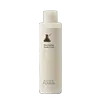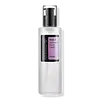What's inside
What's inside
 Key Ingredients
Key Ingredients

 Benefits
Benefits

 Concerns
Concerns

No concerns
 Ingredients Side-by-side
Ingredients Side-by-side

Oryza Sativa Extract
AbsorbentWater
Skin ConditioningGlycerin
HumectantButylene Glycol
HumectantNiacinamide
SmoothingPentylene Glycol
Skin ConditioningCentella Asiatica Extract
CleansingFicus Carica Fruit Extract
HumectantAvena Sativa Kernel Extract
AbrasiveCynara Scolymus Leaf Extract
Skin ConditioningHydrogenated Lecithin
EmulsifyingCamellia Sinensis Leaf Water
MaskingDiphenyl Dimethicone
EmollientTriethylhexanoin
Masking1,2-Hexanediol
Skin ConditioningPolyglyceryl-10 Oleate
Skin ConditioningMethylpropanediol
SolventSodium Citrate
BufferingEthylhexylglycerin
Skin ConditioningHydroxyacetophenone
AntioxidantCitric Acid
BufferingDisodium EDTA
Polyquaternium-51
Skin ConditioningBeta-Glucan
Skin ConditioningHydrolyzed Rice Protein
Skin ConditioningCeramide NP
Skin ConditioningMannitol
HumectantBromelain
Skin ConditioningPapain
Skin ConditioningOryza Sativa Extract, Water, Glycerin, Butylene Glycol, Niacinamide, Pentylene Glycol, Centella Asiatica Extract, Ficus Carica Fruit Extract, Avena Sativa Kernel Extract, Cynara Scolymus Leaf Extract, Hydrogenated Lecithin, Camellia Sinensis Leaf Water, Diphenyl Dimethicone, Triethylhexanoin, 1,2-Hexanediol, Polyglyceryl-10 Oleate, Methylpropanediol, Sodium Citrate, Ethylhexylglycerin, Hydroxyacetophenone, Citric Acid, Disodium EDTA, Polyquaternium-51, Beta-Glucan, Hydrolyzed Rice Protein, Ceramide NP, Mannitol, Bromelain, Papain
 Reviews
Reviews

Ingredients Explained
These ingredients are found in both products.
Ingredients higher up in an ingredient list are typically present in a larger amount.
1,2-Hexanediol is a synthetic liquid and another multi-functional powerhouse.
It is a:
- Humectant, drawing moisture into the skin
- Emollient, helping to soften skin
- Solvent, dispersing and stabilizing formulas
- Preservative booster, enhancing the antimicrobial activity of other preservatives
Butylene Glycol (or BG) is used within cosmetic products for a few different reasons:
Overall, Butylene Glycol is a safe and well-rounded ingredient that works well with other ingredients.
Though this ingredient works well with most skin types, some people with sensitive skin may experience a reaction such as allergic rashes, closed comedones, or itchiness.
Learn more about Butylene GlycolNiacinamide is a multitasking form of vitamin B3 that strengthens the skin barrier, reduces pores and dark spots, regulates oil, and improves signs of aging.
And the best part? It's gentle and well-tolerated by most skin types, including sensitive and reactive skin.
You might have heard of "niacin flush", or the reddening of skin that causes itchiness. Niacinamide has not been found to cause this.
In very rare cases, some individuals may not be able to tolerate niacinamide at all or experience an allergic reaction to it.
If you are experiencing flaking, irritation, and dryness with this ingredient, be sure to double check all your products as this ingredient can be found in all categories of skincare.
When incorporating niacinamide into your routine, look out for concentration amounts. Typically, 5% niacinamide provides benefits such as fading dark spots. However, if you have sensitive skin, it is better to begin with a smaller concentration.
When you apply niacinamide to your skin, your body converts it into nicotinamide adenine dinucleotide (NAD). NAD is an essential coenzyme that is already found in your cells as "fuel" and powers countless biological processes.
In your skin, NAD helps repair cell damage, produce new healthy cells, support collagen production, strengthen the skin barrier, and fight environmental stressors (like UV and pollution).
Our natural NAD levels start to decline with age, leading to slower skin repair, visible aging, and a weaker skin barrier. By providing your skin niacinamide, you're recharging your skin's NAD levels. This leads to stronger, healthier, and younger looking skin.
Another name for vitamin B3 is nicotinamide. This vitamin is water-soluble and our bodies don't store it. We obtain Vitamin B3 from either food or skincare. Meat, fish, wheat, yeast, and leafy greens contain vitamin B3.
The type of niacinamide used in skincare is synthetically created.
Learn more about Niacinamide